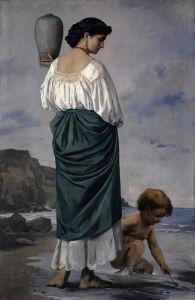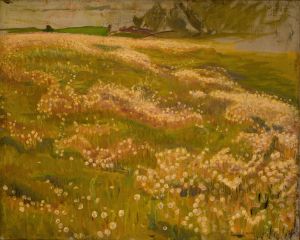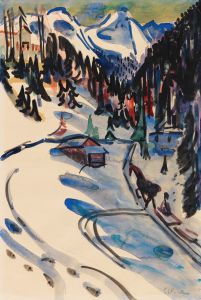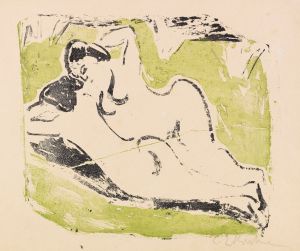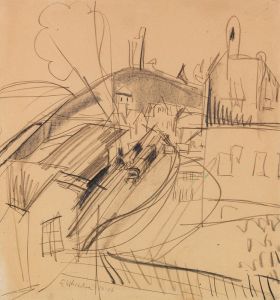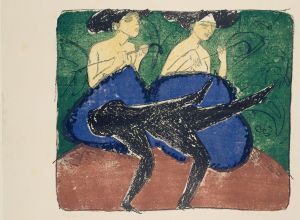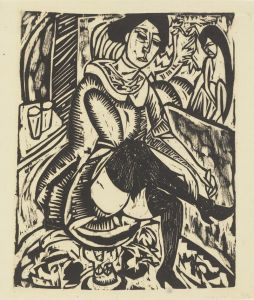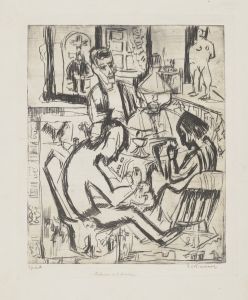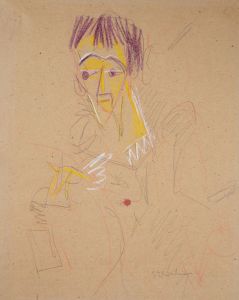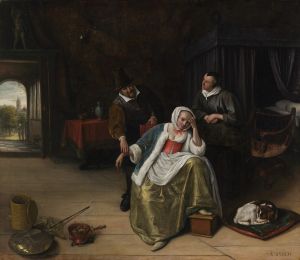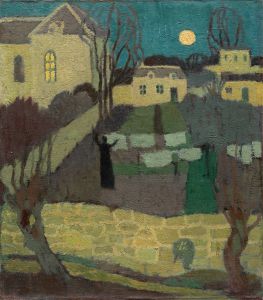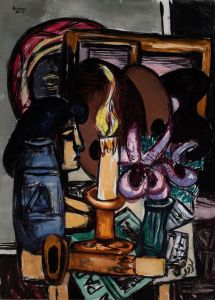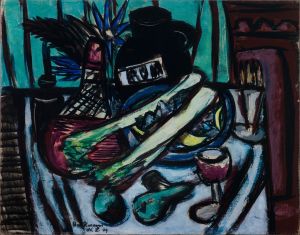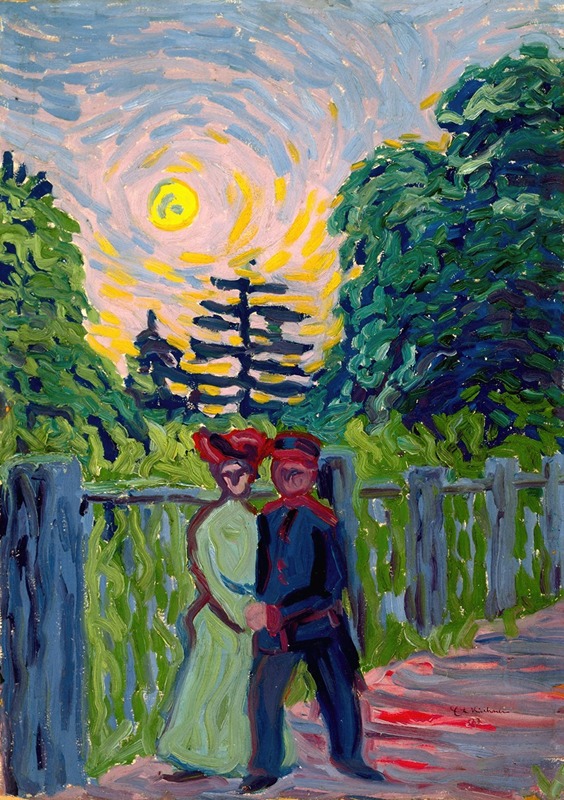
Moonrise; Soldier and Maiden
A hand-painted replica of Ernst Ludwig Kirchner’s masterpiece Moonrise; Soldier and Maiden, meticulously crafted by professional artists to capture the true essence of the original. Each piece is created with museum-quality canvas and rare mineral pigments, carefully painted by experienced artists with delicate brushstrokes and rich, layered colors to perfectly recreate the texture of the original artwork. Unlike machine-printed reproductions, this hand-painted version brings the painting to life, infused with the artist’s emotions and skill in every stroke. Whether for personal collection or home decoration, it instantly elevates the artistic atmosphere of any space.
"Moonrise; Soldier and Maiden" is a painting by the German expressionist artist Ernst Ludwig Kirchner. Created in 1915, this work is a significant example of Kirchner's style and thematic concerns during a tumultuous period in his life and career. Kirchner was a founding member of the artist group Die Brücke (The Bridge), which played a crucial role in the development of Expressionism in early 20th-century Germany.
The painting depicts a soldier and a maiden in a nocturnal landscape, illuminated by the light of a rising moon. The soldier, dressed in a uniform, stands in a protective stance beside the maiden, who appears to be in a state of contemplation or distress. The moonlight casts an eerie glow over the scene, enhancing the emotional intensity and the sense of unease that characterizes much of Kirchner's work from this period.
Kirchner's use of bold colors and dynamic brushstrokes is evident in "Moonrise; Soldier and Maiden." The contrasting hues and the dramatic interplay of light and shadow create a sense of tension and movement. This technique is typical of Kirchner's expressionist style, which sought to convey emotional experiences rather than realistic depictions.
The context of World War I is crucial to understanding this painting. Kirchner volunteered for military service in 1914, but his experiences in the war had a profound impact on his mental and physical health. He suffered a nervous breakdown in 1915, the same year he created "Moonrise; Soldier and Maiden," and was subsequently discharged from the army. The themes of war, anxiety, and the human condition are prevalent in his work from this period.
"Moonrise; Soldier and Maiden" reflects Kirchner's personal struggles and the broader societal turmoil of the time. The soldier can be seen as a representation of the artist himself, grappling with the horrors of war and its impact on the human psyche. The maiden, on the other hand, may symbolize innocence, vulnerability, or the emotional toll of the conflict on those left behind.
Kirchner's work, including "Moonrise; Soldier and Maiden," has been influential in the history of modern art. His contributions to the Expressionist movement helped to shape the direction of 20th-century art, emphasizing the importance of personal expression and emotional depth. Today, Kirchner's paintings are held in high regard and can be found in major art museums and collections around the world.
In summary, "Moonrise; Soldier and Maiden" is a poignant and powerful example of Ernst Ludwig Kirchner's expressionist art. Created during a period of personal and global crisis, the painting captures the emotional intensity and psychological complexity that define much of Kirchner's work. Through its vivid colors, dynamic composition, and evocative themes, the painting continues to resonate with viewers and offers a window into the artist's inner world and the broader historical context of the early 20th century.





